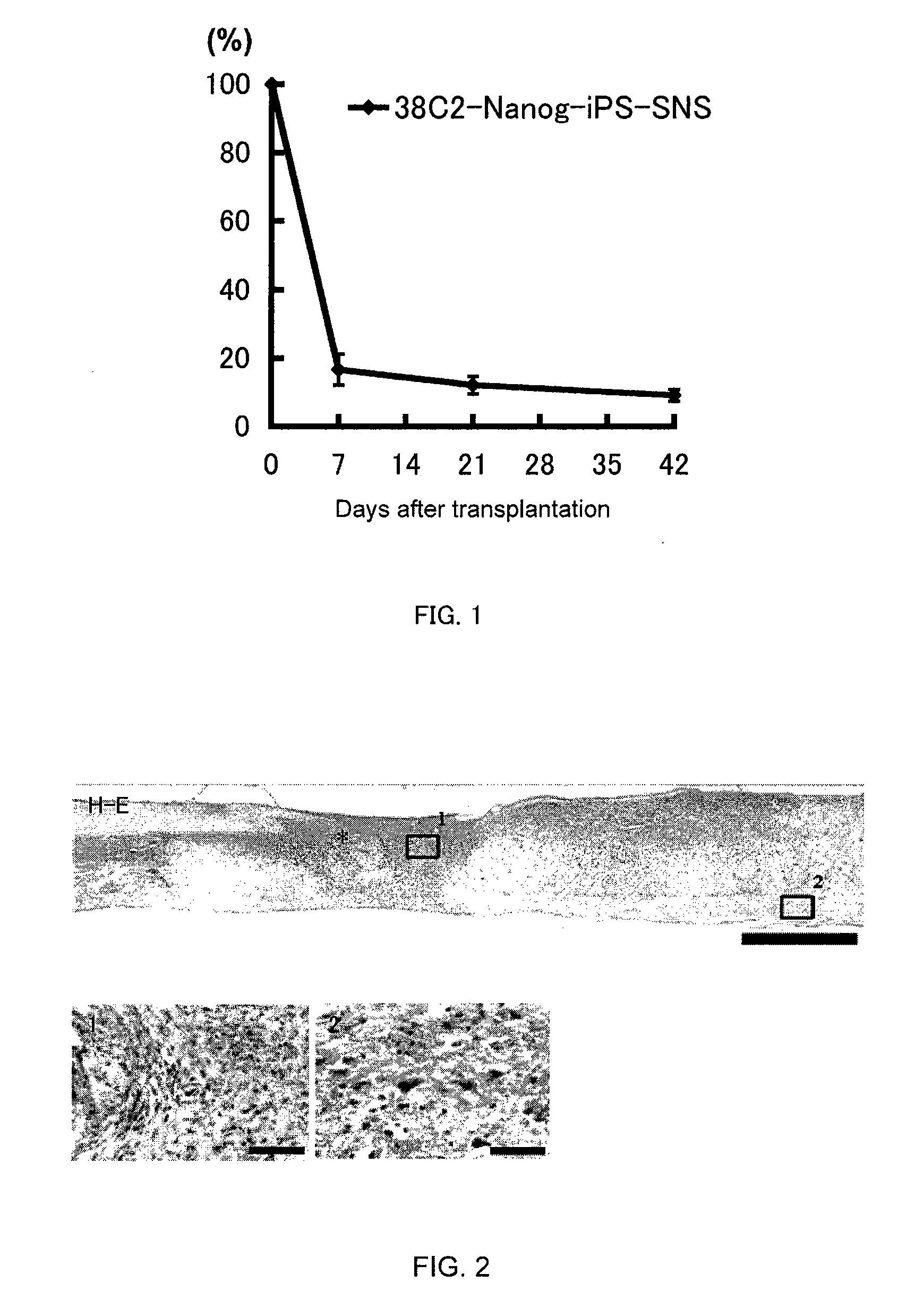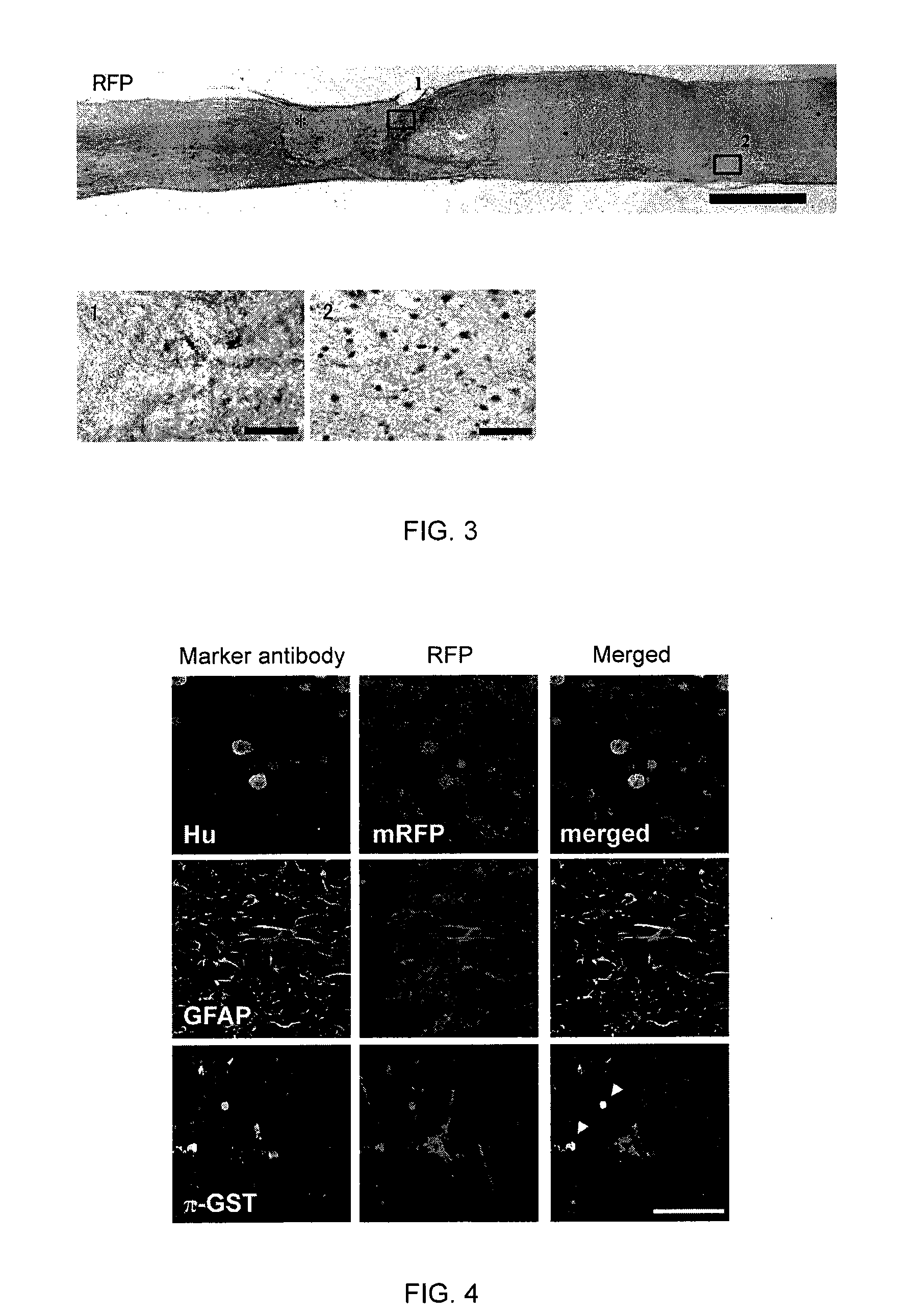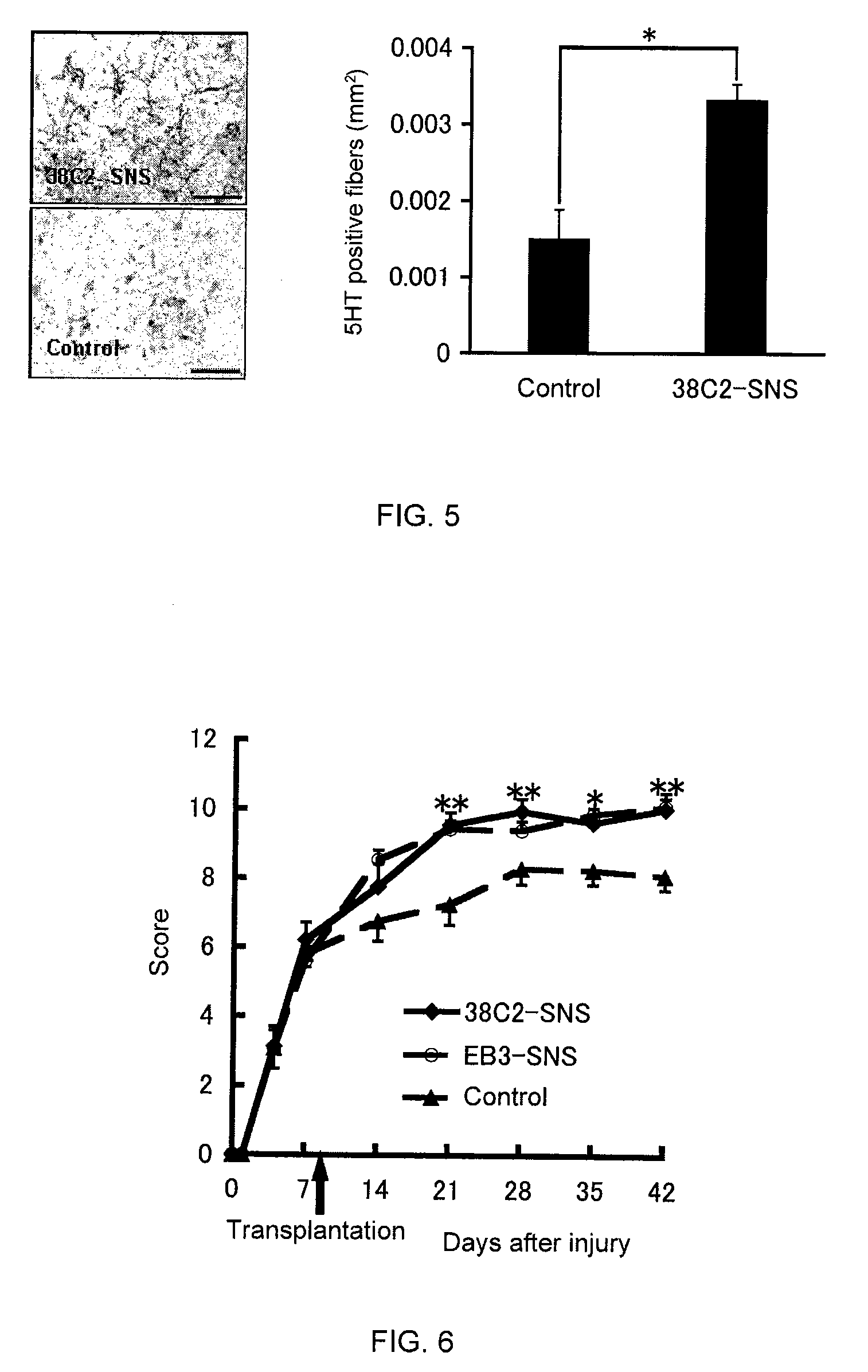Method of treating neural defects
a neural defect and nerve injury technology, applied in the field of nerve injury treatment, can solve the problems of unclear medical application, unclear what kind of use is possible, and no guarantee that the transplantation of ips cells would result in normal cell differentiation,
- Summary
- Abstract
- Description
- Claims
- Application Information
AI Technical Summary
Benefits of technology
Problems solved by technology
Method used
Image
Examples
examples
==Cells Used==
[0030]In this example, the differentiated cell-derived pluripotent cells were obtained by introducing Oct3 / 4, Sox2, c-Myc, and Klf4 as nuclear reprogramming factors to mouse embryonic fibroblasts. Specifically, Fbxo15-iPS cells were obtained by a selection using Fbxo15 gene expression as a marker and Nanog-iPS cells were obtained by a selection using Nanog gene expression as a marker. In particular, the following clones were used: as the Fbxo15-iPS cells, 4-3 Fbxo15-iPS clone (Takahashi et al., Cell vol. 126, pp. 663-676, 2006), into which T58A-c-Myc had been introduced, and WT1 Fbxo15-iPS clone (Takahashi et al., Cell vol. 126, pp. 663-676, 2006), into which the wild-type c-Myc had been introduced, were used. As the Nanog-iPS cells, 20D17 Nanog-iPS clone and 38C2 Nanog-iPS clone (Okita et al., Nature vol. 448, pp. 313-317, 2007), into which T58A-c-Myc had been introduced, as well as 38D2 Nanog-iPS clone (Okita et al., Nature vol. 448, pp. 313-317, 2007), into which th...
PUM
 Login to View More
Login to View More Abstract
Description
Claims
Application Information
 Login to View More
Login to View More - R&D
- Intellectual Property
- Life Sciences
- Materials
- Tech Scout
- Unparalleled Data Quality
- Higher Quality Content
- 60% Fewer Hallucinations
Browse by: Latest US Patents, China's latest patents, Technical Efficacy Thesaurus, Application Domain, Technology Topic, Popular Technical Reports.
© 2025 PatSnap. All rights reserved.Legal|Privacy policy|Modern Slavery Act Transparency Statement|Sitemap|About US| Contact US: help@patsnap.com



